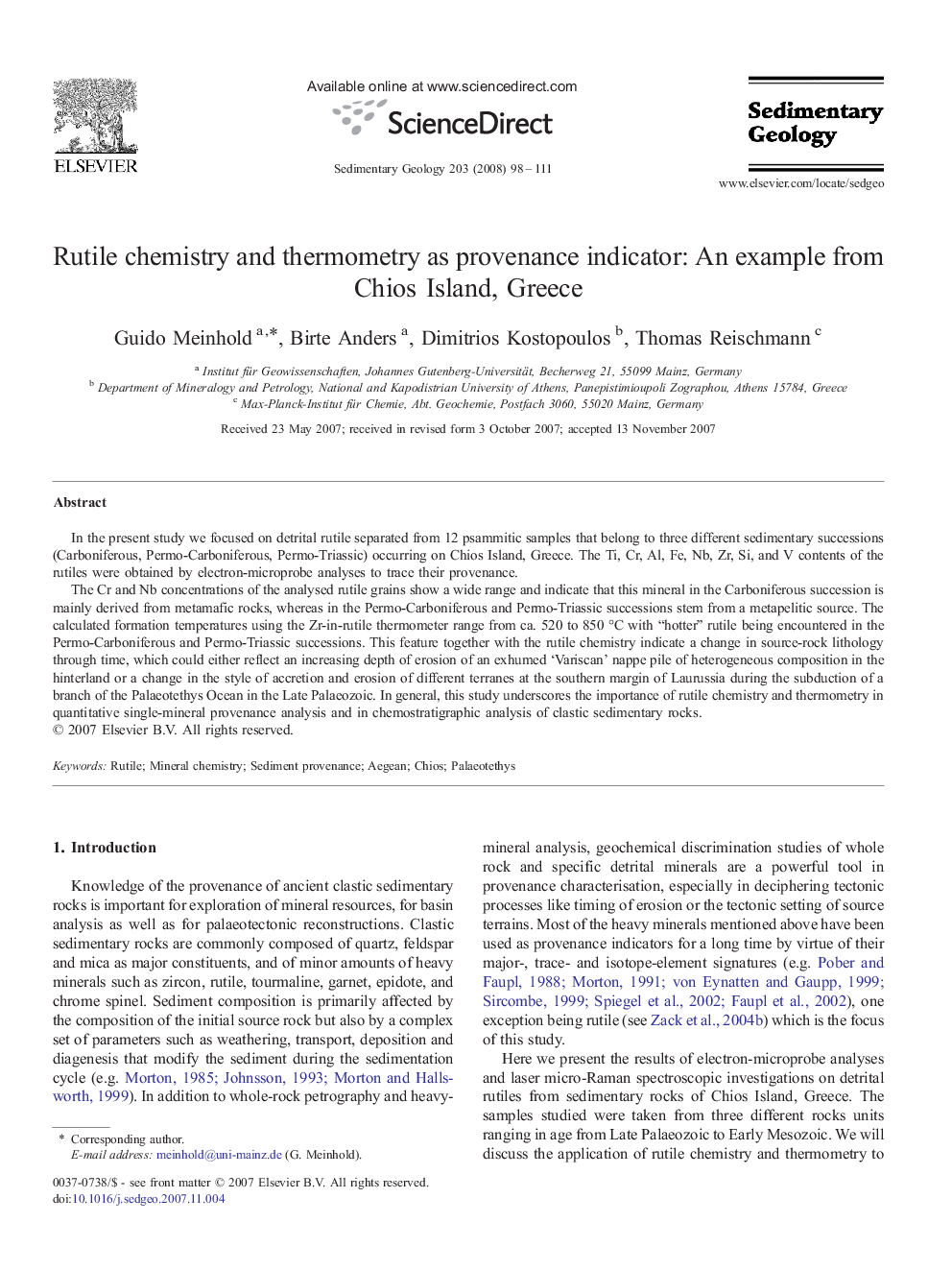| Article ID | Journal | Published Year | Pages | File Type |
|---|---|---|---|---|
| 4690684 | Sedimentary Geology | 2008 | 14 Pages |
In the present study we focused on detrital rutile separated from 12 psammitic samples that belong to three different sedimentary successions (Carboniferous, Permo-Carboniferous, Permo-Triassic) occurring on Chios Island, Greece. The Ti, Cr, Al, Fe, Nb, Zr, Si, and V contents of the rutiles were obtained by electron-microprobe analyses to trace their provenance.The Cr and Nb concentrations of the analysed rutile grains show a wide range and indicate that this mineral in the Carboniferous succession is mainly derived from metamafic rocks, whereas in the Permo-Carboniferous and Permo-Triassic successions stem from a metapelitic source. The calculated formation temperatures using the Zr-in-rutile thermometer range from ca. 520 to 850 °C with “hotter” rutile being encountered in the Permo-Carboniferous and Permo-Triassic successions. This feature together with the rutile chemistry indicate a change in source-rock lithology through time, which could either reflect an increasing depth of erosion of an exhumed ‘Variscan’ nappe pile of heterogeneous composition in the hinterland or a change in the style of accretion and erosion of different terranes at the southern margin of Laurussia during the subduction of a branch of the Palaeotethys Ocean in the Late Palaeozoic. In general, this study underscores the importance of rutile chemistry and thermometry in quantitative single-mineral provenance analysis and in chemostratigraphic analysis of clastic sedimentary rocks.
